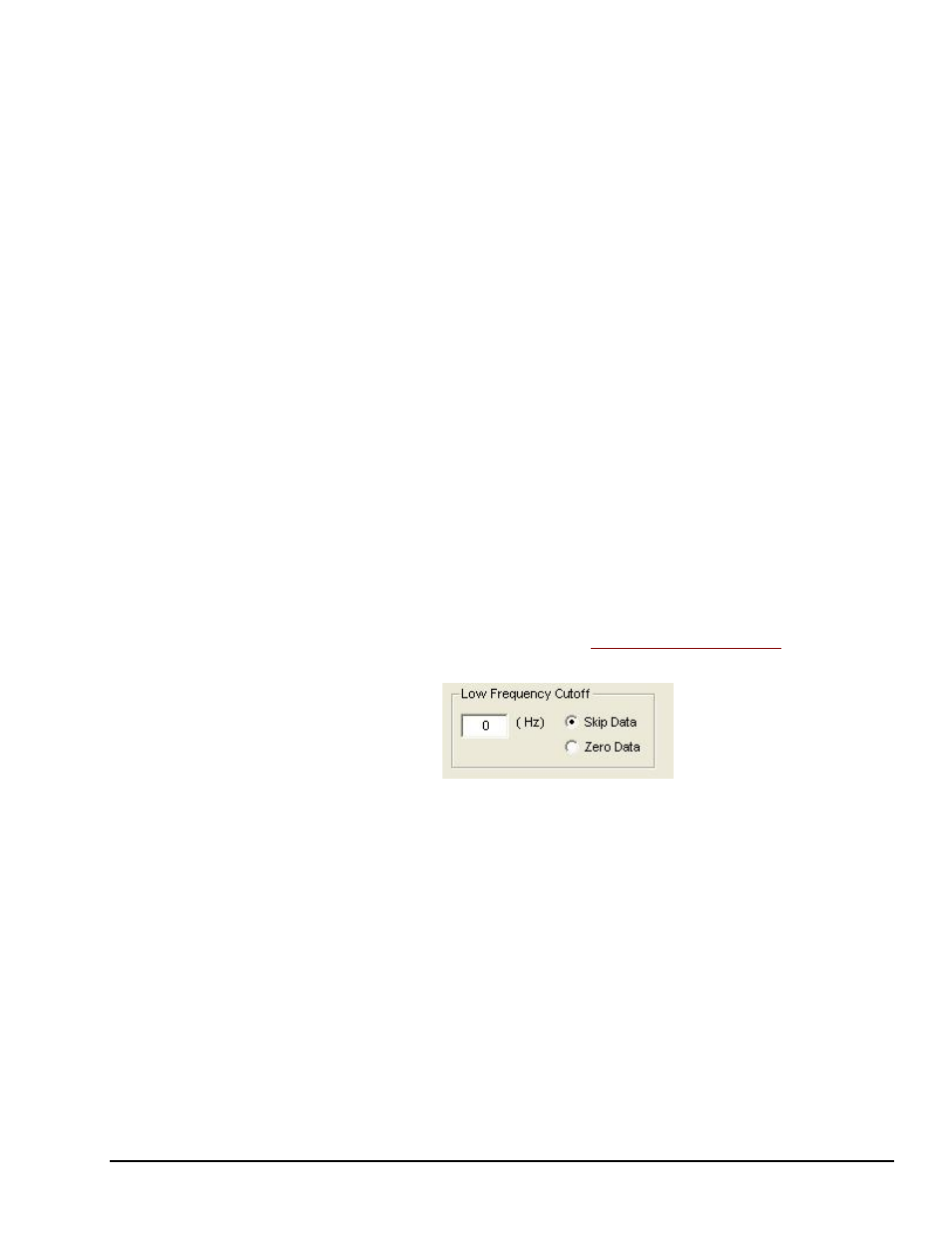Measurement Computing eZ-PostView rev.2.0 User Manual
Page 109

eZ-Analyst
969795
Edit Menu 4-31
Response Increase:
If the Response Increase radio-button is selected, the reference
channel’s location doesn’t change. The response’s location(s) are
increased [or decreased] for next available location numbers.
Reference Increase:
If the Reference Increase radio-button is selected, the response
channel’s location doesn’t change. The reference’s location(s) are
increased [or decreased] for next available location numbers.
Location Increment:
Indicates the number by which eZ-Analyst is to increment the
response or reference location after each measurement.
Note: Decreasing location numbers are only available with the manual bank
button on the Modal Locations window. Modal Locations is accessed from
eZ-Analyst
Windows pull-down menu.
A Note About Channel Pairs
A Channel Pair is a Reference channel and a Response channel that are used to display a dual-
channel function, such as an FRF (Frequency Response Function). Channel Pairs are
automatically defined when a user selects "Reference" channel type for an input channel. For
example, if Channels 1 and 2 were defined as reference channels, then all response channels
would paired to those channels. Thus,
1,1 2,1 3,1 4,1 5,1 6,1 7,1 8,1
and
1,2 2,2 3,2 4,2 5,2 6,2 7,2 8,2
To export all of the data for the Channel Pairs, select the “All Ch. Pairs” radio button in the
Export Function Data window (see chapter 3 for window details).
Edit Menu > Configuration >
FFT Setup Tab:
Low Frequency Cutoff
Low Frequency Cutoff Panel
The Low Frequency Cutoff panel can be used to change frequency-based displays. For
example, if you wanted to remove frequency noise below 10 Hz you would enter “10” in
the numeric field and then select Skip Data or Zero Data.
If Skipped Data is selected, all data below 10 Hz will be skipped, i.e., it will not be displayed.
If Zero Data is selected, all data below 10 Hz will be displayed as a value of zero.
